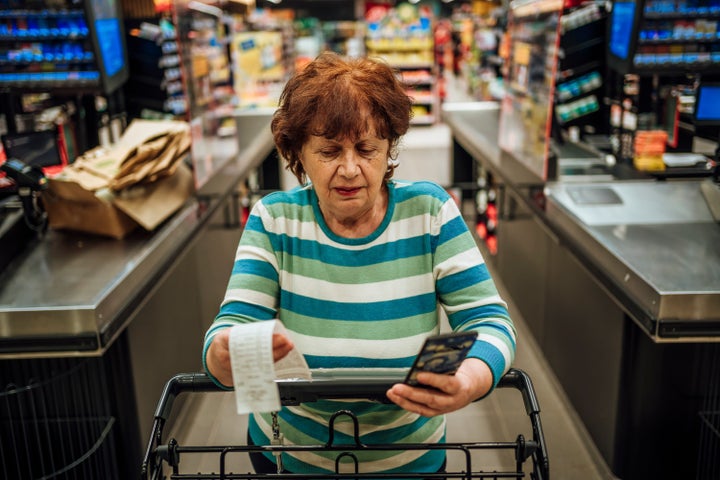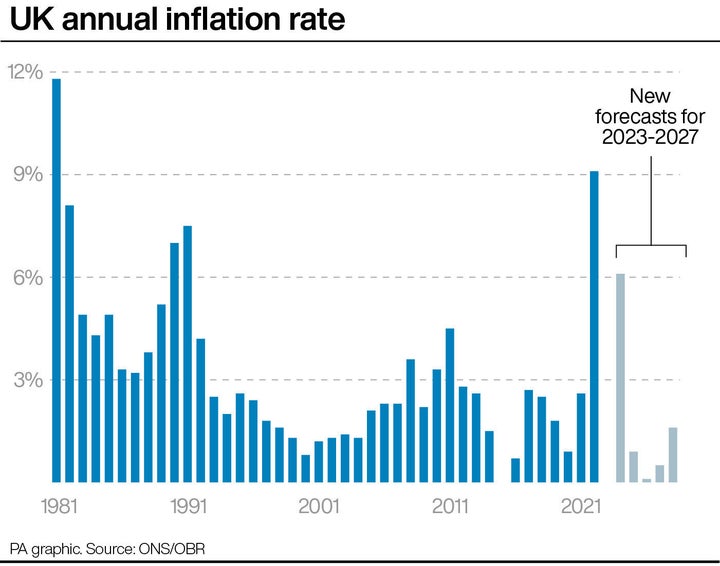
Unfortunately consumer prices crept up again to an inflation rate of 10.4% in February, according to the latest figures.
Inflation is the rate at which prices for goods and services have increased over the last 12 months, so it is seen as a marker for how the UK economy is doing.
The Office for National Statistics (ONS) revealed this increase after economists had predicted inflation would fall to below January’s rate of 10.1%.
Here’s what you need to know.
Why is inflation so important?
The Bank of England aims to keep inflation at 2%, so the economy grows at a steady rate.
The current rate is too high, meaning consumers end up paying unaffordable rates for goods and services – and wages are definitely not going up at the same pace.
So that means what is in your pocket doesn’t end up going nearly as far as it did a year ago.
Why is this 10.4% stat particularly bad?
It’s a bit of shock considering economists had predicted a decline in inflation to 9.9% for February.
It’s also the first time UK inflation has risen in four months, and means we’re creeping back to the 41-year high figures we saw in October 2022 of 11.1% inflation.
It also means real wages are still falling.
As Resolution Foundation’s James Smith pointed out: more expensive food means “lower-income families are facing the greatest price pressures of all, with an effective inflation rate above 12%”.

What caused it?
Higher prices in restaurants and cafes, and an increased cost of food and clothing all drove February’s inflation rate increase.
Hospitality sector
Chief economist for the ONS, Grant Fitzner, said experts had not been expecting “an increase in the price of alcohol in pubs and restaurants in February after some discounting” in January.
The inflation rate of restaurants and hotels rose by 12.1%, up from 10.8% in January. The ONS says that is the highest rate since July 1991.
Food and non-alcoholic drink
Meanwhile, food and non-alcoholic drink price inflation is at a 45-year high of 18.2% following the vegetable shortage which hit supermarkets recently, triggered by energy costs and bad weather.
Back in January, this rate was at 16.8% – data modelling shows it was last this high back in August 1977, when food inflation hit around 21.9%.
Clothes
Clothing also climbed by 8% in the year to February compared to 6.2% in January, as new stock entered the market and the January sales ended.
And – surprise, surprise – the largest increase came from women’s clothing.
The difference between these two rates is the largest amount observed within the clothing sector between January and February since 2012.
What was the overall impact of these sectors?
Luckily, all of these high inflation rates were at least partially offset by the fall in the cost of motor fuel, which has been declining for the last seven months.
It wasn’t completely cancelled out though – the inflation rate of housing, water, electricity, gas and other fuels all increased by 26.6%.

Is this happening everywhere?
Not quite. Prices are rising faster in Britain than in the eurozone or the US.
Inflation in the eurozone dipped to 8.5% in February 2023, down from 8.6% in January.
Meanwhile, American consumer prices rose by 6% year on year in February this year. This was a decline from 6.4% in January 2023.
The UK’s inflation rate last month was the highest in the G7 as the only nation still battling with double digit numbers.
What next?
Inflation is still expected to fall in the coming months as energy bills drop over summer, but it looks unlikely to be a straightforward ride.
The Bank will be setting new interest rates on Thursday – that’s the general cost of borrowing and usually a deterrent to stop people spending.
It’s not yet known if it will increase, decrease or leave the current 4% interest rate as it is. This is an exceptionally high interest rate, which was last seen in 2008.
So far, the Bank has increased the rate 10 times in a row since December 2021 in an effort to encourage people to spend less and get inflation to climb back down.
But, the New Economics Foundation called for the Bank not to resist pressure to raise borrowing costs.
It tweeted: “Our forecasts show that price rises on essentials will outstrip rising incomes 3x faster for the poorest families vs those on middle incomes.
“It’s only the richest households who continue to see incomes rise faster than inflation.”
It called for the government to rebuild the country’s income safety net, invest in public services and improve public sector workers pay.”
Chancellor Jeremy Hunt also tried to keep spirits up by saying that a slowdown had not been inevitable.
Speaking after the latest inflation rate was announced, he said: “We recognise just how tough things are for families across the country, so as we work towards getting inflation under control we will help families with cost-of-living support worth £3,300 on average per household this year.”
